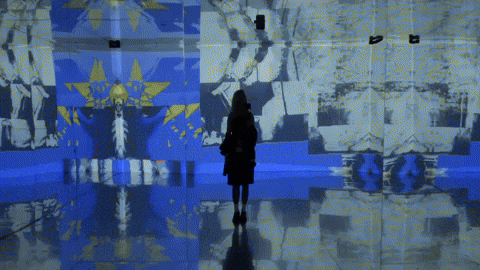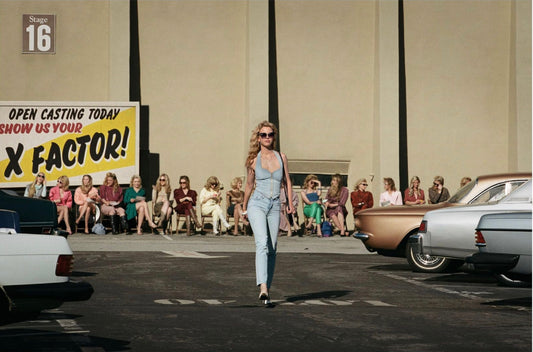
Blinded by Banksy
Share
Visionary artists are these rare individuals who redefine the rules, reshaping our perceptions and pushing ideas to places beyond the conventional. Their creations can be hard to articulate fully, yet they leave an undeniable impact. These are the artists who compel us to question things.
Recently, while wandering through the DC Universe at Warner Brothers, I found myself at the Batman exhibit, surrounded by a glass displays of Batman masks from every film the studio produced. It got me thinking about superheroes anonymity, how sometimes artists, like superheroes, need to wear masks to shield themselves. This thought led me to consider the most notorious street artist of our time, Banksy.

Like a modern-day superhero of the art world, he operates much the same. He works in secrecy, often under cover of darkness, leaving messages on walls, buildings, and in the forgotten corners of gritty cities. He doesn’t seek permission or wait for approval, he simply creates, leaving the world to absorb his art, for free.
On his instagram Banksy once posted a quote from art critic Robert Hughes -

As expected, when Banksy’s work appears on the streets, it doesn’t stay there long. It’s filmed for primetime news, photographed, Instagrammed, and then auctioned off to the highest bidder at Sotheby’s, vanishing from public view. While we may never see it again in its original form (nor may the buyer, but that’s another story), its message lingers.

Last week, a private auction in Los Angeles featured works from Banksy’s former manager, who was selling pieces from his personal collection. Their professional split reportedly stemmed from the manager expanding his roster, which didn’t sit well with Banksy, for whom art is a full-time job. Would Banksy approve of his work being sold to the highest bidder? Probably not. And while imitators follow in his wake, they’re always miles behind. Banksy seems indifferent to this commercialization, on his website pestcontrol.com.

"I wrote copyright is for losers in my (copyrighted) book and still encourage anybody to take and amend my art for their own personal amusement, but not for profit or making it look like I’ve endorsed something when I haven’t."

In his Academy Award-nominated documentary Exit Through the Gift Shop, Banksy shows us a behind-the-scenes of the street art world, where obsession and imitation blur originality. The film follows Thierry Guetta, a videographer documenting street art’s rise and Banksy’s growing fame. Guetta becomes part of the story, leading to a satirical look at art and the commodification of creativity. Exit Through the Gift Shop leaves the audience wondering what’s real and what’s curated. The final cut premiered at the 2010 Sundance Film Festival and was nominated for Best Documentary Feature at the 83rd Academy Awards. And yes you can watch it on youtube for free.
Banksy’s anonymity and disdain for commercialization make exhibitions like The Art of Banksy intriguing. While it’s unclear if Banksy authorized the show, his art still resonates with the public. The controversy only adds to its allure, here are a are a few:

Pulp Fiction (2004)
This piece draws on the pop culture influence of Quentin Tarantino’s Pulp Fiction.

Dismaland Tees (2015)
The Dismaland exhibition (and its associated merchandise) was a critique of both the commercialization of art and theme parks.

Paranoid Pictures (2003)
No comment.

Stop Me Before I Paint Again (2004)
A personal, almost self-deprecating piece, it comments on the overwhelming and repetitive nature of artistic creation.

Girl with Balloon (2004)
One of Banksy’s most iconic works, it portrays a girl reaching for a red heart-shaped balloon, symbolizing innocence, hope, and loss.

Meat Truck (2013)
This provocative piece critiques how animals are commodified within the food industry, and the darker aspects of consumer culture.
Infinity Room (2023), an immersive 4D mirrored art installation.
Since Banksy's down a videographer, I thought I’d film the full 4 minute version and share it on youtube (click here.)

The exhibition also has a spray-paint your own Banksy tee (no judgment) but I’m not touching the licensing situation. Instead, I bought the colored crayons and in true Banksy spirit I gave them away to someone who gets it.




